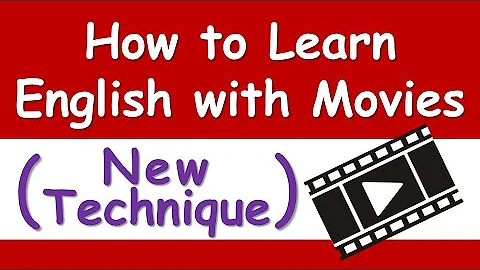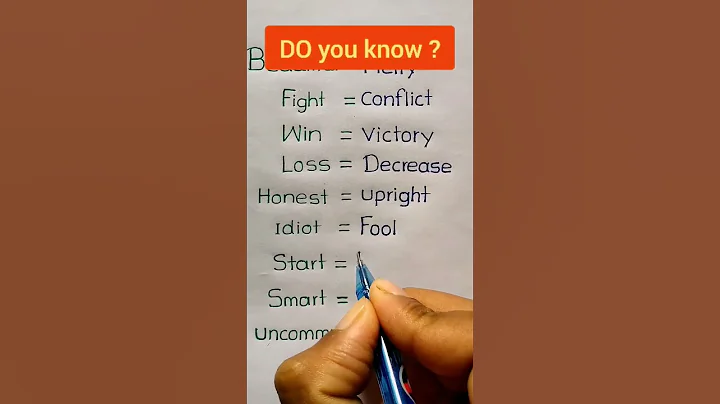



1. Unit features
This unit has rich teaching content and diverse types, four short reading essays, one writing training, one oral communication, and one classic reading, which together embodies the following three characteristics:
1. Both tools and humanities are taken into account. The texts in this unit are mostly explanatory texts of things. "Chinese Stone Arch Bridge", " Suzhou Garden ", and " Dream Back to the Prosperity " are typical explanatory texts of things. "Zen" is an interweaving introduction of things and expounding examples, focusing on introducing things. These four reading texts are all about teaching based on explaining things to grasp the characteristics of the characteristics, and keeping them consistent with the center of writing training. Through the combination of reading and writing, students can be guided to master the core characteristics of the writing method of the explanatory text. At the same time, by understanding excellent works such as architecture, gardens, painting art with Chinese characteristics, we will enhance students' sense of national pride, and further feel the rational spirit of truth-seeking and pragmatic explanatory text in reading the famous book "Insect Record", and stimulate interest in scientific exploration.
2. Reading and writing are the same as listening and speaking. Judging from the relationship between the text and student activities, the four different types of learning activities have key points and overlaps, and have learned and learned, training students' basic abilities in listening, speaking, reading and writing. If the four texts are learning about listening, speaking, reading and writing, then speaking, retelling and retelling, writing training, and explaining things, the introduction of the famous work "Insect Record" is the application and practice of listening, speaking, reading and writing abilities. Only by making good use of the textbooks, using them vigorously and thoroughly, exploring the rich teaching resources in the textbooks, and four rich and diverse learning activities arranged in the entire unit can we build a learning system for explanatory texts from multiple angles, and promote the comprehensive improvement of students' listening, speaking, reading, writing and other abilities.
3. It is a fusion of commonality and personality. From the perspective of the commonality and personality relationship of unit texts, the teaching of the four texts requires both the same and the same. The interpretation and teaching of a single text should be subject to the unit as a whole and support the goals of unit teaching from different angles. In order to distinguish teaching methods and teaching priorities in the unit, different teaching angles should be selected.
At the same time, the unit text must be classified and the individuality of each text must be paid attention to the classification. This requires teachers to base themselves on learning situations and discover the personalized teaching value of unit texts.
2. Learning objectives
The teaching objectives of this unit are easier to grasp, because this is the first explanatory unit in junior high school, so we all put forward relatively basic requirements.
1. Understand common explanation methods and learn to grasp the characteristics to explain things. The objects of explanation in this unit are specific things. To achieve the purpose of explaining and clarifying it lies in the characteristics of this thing. But if you want others to know and understand this thing, you must grasp its characteristics and introduce it in an orderly manner. For example, "Chinese Stone Arch Bridge" captures the characteristics of a long history, beautiful form and solid structure, while "Suzhou Garden" captures the characteristics of "no matter where the visitors stand, they always have a perfect picture in front of them." At the same time, in teaching, students should combine the content of the text to allow students to read, compare, analyze and understand these basic explanatory methods, such as defining, giving examples, making comparisons, etc., to master their respective characteristics, experience them as they can also flexibly use them in their own compositions.
2. Experience the different language styles of explanatory texts and enhance the organization and rigor of thinking. The emphasis of explanatory texts is to give readers knowledge. Therefore, the language of explanatory texts is scientific, accurate and rigorous, which can guide students to read and experience repeatedly. At the same time, teaching of explanatory language style should also be included in the scope of explanatory text teaching. The language of these four texts has their own characteristics. "Chinese Stone Arch Bridge" is simple and rigorous in language, while "Suzhou Garden" is beautiful and Zen personalizes the object of its description, full of emotion. The language of "Dream Back to the Prosperity" has more bookish spirit and absorbs the expression of classical Chinese. A large number of four-character phrases are elegant and interesting. Teachers can guide students to experience the differences in the explanatory language styles through comparison, reading, etc.
3. Learn the explanatory text with its own characteristics and understand the humanistic connotation contained in the text.Although the contents of the four reading articles in this unit are different and have their own characteristics, they are all explanatory texts. Students can read the content of the article independently by using the general reading methods of explanatory texts, but understanding the humanistic connotation of the article is easily overlooked in explanatory text teaching, which requires the guidance of the teacher. Only by understanding the humanistic connotation of the explanatory text can one truly grasp the characteristics of the explanatory object. Because it shows that the object itself is an integral part of culture, its soul lies in a specific cultural spirit. For example, the high praise of the wisdom of ancient Chinese working people in "Chinese Stone Arch Bridge" and the full confidence in our country's socialist system and career. Today, when we emphasize the Chinese Dream , it is actually very innovative and valuable; the love for the traditional Chinese garden architecture of and the appreciation of aesthetic characteristics in "Suzhou Garden" should be passed on; "Cicada" is full of humanistic respect and pity for small creatures; "Dream Back to Prosperity" expresses admiration and praise for important cultural heritage, and at the same time, when revealing it into social content, it criticizes the incompetence and corruption of the politics of the late Northern Song Dynasty.
These connotations may not be the focus of explanatory text teaching, but they should not be excluded from explanatory text teaching content.
3. Learning strategy
The learning of this unit should be based on the author's text, understand the editor's intentions, develop teaching resources, improve learning experience, build a complete explanatory knowledge system, and apply it to writing practice. Start from the following four aspects.
1. Get one lesson at a time and master the knowledge of literature and style. The standard classic of "Chinese Stone Arch Bridge" is listed as the first article. To understand the editor's intention, it is by no means a simple teaching of stylistic knowledge. Because the learning of this lesson is based on the understanding of stylistic knowledge of stylistic knowledge in primary school, this lesson needs to consolidate students' understanding of stylistic knowledge in the text context. "Suzhou Garden" has more prose styles than "Chinese Stone Arch Bridge", which lists it as the second article of the text to read, and also provides guidance on the methods of the two self-readed literary explanatory texts. Therefore, the explanation language of this article should be focused on analysis, and the order of explanation and paragraph structure of the total score are excellent examples for practicing writing. As a self-reading text, "Zen" also needs to let students feel its characteristics, such as the description that combines literary brushwork, the use of personification, metaphor and other techniques. The full text describes insects as humans, which is full of the author's emotions, and highlights the characteristics of silkworms through various explanation methods such as comparison. The language is both objective and accurate, and vivid and interesting. "Dream Back to the Prosperity" is the last article of this unit, and there are no other comments, so personalized guidance should be provided on the basis of respecting students' self-reading experience. Students can sort out the order of explanations by themselves, teachers can arrange the details and instructions by themselves, and students can summarize and explain the methods by themselves, and teachers can guide students to understand why this explanation method is most suitable in this part. Students circle out four-character words, appreciate the characteristics of language, and the teacher guides students to feel the compatibility of language and the characteristics of things.
2. Activity design enriches student experience. The explanatory text itself lacks the stimulation of the plot. If a simple knowledge teaching is conducted according to the conventional teaching methods, it will definitely not arouse students' initiative. Therefore, the teaching of this unit requires teachers to develop teaching resources and help students learn knowledge in the activity context. The following are three types of activity for your reference. The first thing to fill out the reading card, such as filling out the reading card of "Suzhou Garden", can let students group it, and then find the corresponding characteristics of "Suzhou Garden" in the text, and complete the task list for text corresponding to
. For example, after explaining various annotation methods, the teacher can use the task card to guide students to sort out the main content of the article, and then guide students to exchange their annotations to read the experience. The second form of activity is to set up relevant situations. For example, in "China Stone Arch Bridge", a situation where a supplementary example is set up before writing, so that students can think about whether the choice of examples is consistent with the characteristics and views proposed in the text. "Suzhou Garden" allows students to speak in the tone of tourists and talk about their feelings about the garden in the sentence "according to the "Suzhou Garden" has the beauty of , look at ".The third form of activity is to publish hierarchical tasks. "Oral Communication" has three questions in the textbook. We can directly set up overall activities based on these three questions. The first question guides students to briefly retell, the second question guides students to retell, and the third question guides students to integrate and process the materials given and briefly retell. For example, the total situation was set at the beginning of "Dream Back to the Prosperity":
Recently, the school was preparing for an art festival. The students in the publicity team wanted to use the article "Dream Back to the Prosperity" to hold a theme exhibition on the Qingming Festival of the River During the Qingming Festival in the school art hall. However, I encountered difficulties in the planning and editing process. I wanted to ask for help from us, hoping to get everyone's support, and then carry out targeted teaching based on the corresponding links.
3. Grasp keywords and compare language characteristics. The four explanatory texts in this unit have different characteristics, and explain the characteristics of the accurate, rigorous and vivid language of the explanatory text from different ways. We need to grasp the keywords and compare their respective characteristics. For example, "China Stone Arch Bridge" mainly reflects accuracy and rigor through uncertain expressions; "Suzhou Garden" analyzes it through the mutual comparison of two synonyms. At the same time, it can also compare the limited words "Suzhou Garden" that leave no room for space with limited words "China Stone Arch Bridge" that leave room for space, so that students can feel the accuracy and rigor of the explanatory language from multiple angles. The language of "Cicada" is not only objective and accurate, but also vivid and interesting. It mainly describes the details in detail through precise and vivid verbs. "Dream Back to the Prosperity"
reflects the elegance and beauty of the language through the use of four-character words. At the same time, this characteristic is also very consistent with the humanistic connotation of the object of explanation.
4. Connect internally and externally, learn reading and writing methods. First, circle and draw notes and draw them to extract important information. Training students' ability to extract information from articles is the basic goal of explanatory text teaching, so teachers should teach students effective ways to extract information. Circle means that students are required to circle out important sentences that explain the characteristics of things when reading the text. "Criticize" means annotating sentences in the article that use the explanatory method, and "paint" means outlining the first sentence, last sentence, transition sentence, etc. in the explanatory text to help students clarify the hierarchy of the article. The acquisition of this method can not only be used to read the text in class. It can also be used for reading extracurricular classics. The second is to write fragments and use instructions. Students can apply what they have learned through learning, so teachers need to understand the text and develop writing resources. For example, the chronological order of the last paragraph of "Chinese Stone Arch Bridge" and the total score structure of Suzhou Garden are all good resources for paragraph dictation to enhance the organization and rigor of students' thinking.
The key point of writing training in this unit is to explain that things should grasp the characteristics. This requires students to comprehensively use appropriate explanation order and explanation methods, arrange details reasonably, and highlight the characteristics of things in a more organized manner.
In short, from dictation in class to extracurricular writing, teachers need to proceed step by step and students take steady steps.











